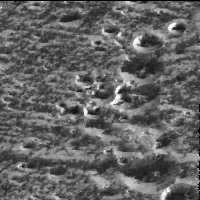This image shows the dark terrain of Ganymede.
Click on image for full size
NASA
Dark Terrain of Ganymede
This image shows an example of the dark terrain of Ganymede. This image shows frost on the ground. The next image shows more of the dark terrain.
The dark terrain is much older than the light terrain of Ganymede. Evidence for the age of the surface is found in it's many craters. Is this respect it very much resembles the surface of Callisto.
You might also be interested in:
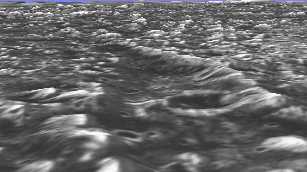
This image shows an example of the dark terrain of Ganymede.
...more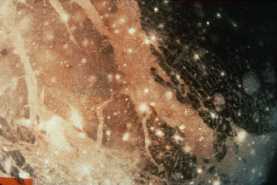
This image shows an example of the light terrain of Ganymede. The image shows the contrast between the light terrain and the dark terrain of Ganymede. The light terrain is where the grooves of Ganymede
...more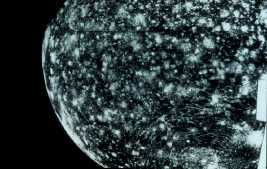
The surface of Callisto is deeply pockmarked with craters. It looks to be perhaps the most severely cratered body in the solar system. There are also very large craters to be found there. The severity
...more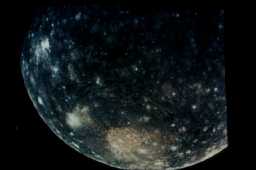
The surface of Ganymede is halfway between that of Callisto and that of Europa. Portions of the crust are of ancient age, while other portions are relatively new. The little white dots shown in this image
...more
Amalthea was discovered by E Barnard in 1872. Of the 17 moons it is the 3rd closest to Jupiter, with a standoff distance of 181,300 km. Amalthea is about the size of a county or small state, and is just
...more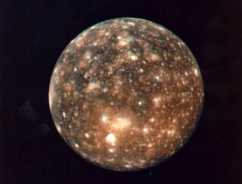
Callisto was first discovered by Galileo in 1610, making it one of the Galilean Satellites. Of the 60 moons it is the 8th closest to Jupiter, with a standoff distance of 1,070,000 km. It is the 2nd largest
...more
Most of the moons and planets formed by accretion of rocky material and volatiles out of the primitive solar nebula and soon thereafter they differentiated. Measurements by the Galileo spacecraft have
...more


